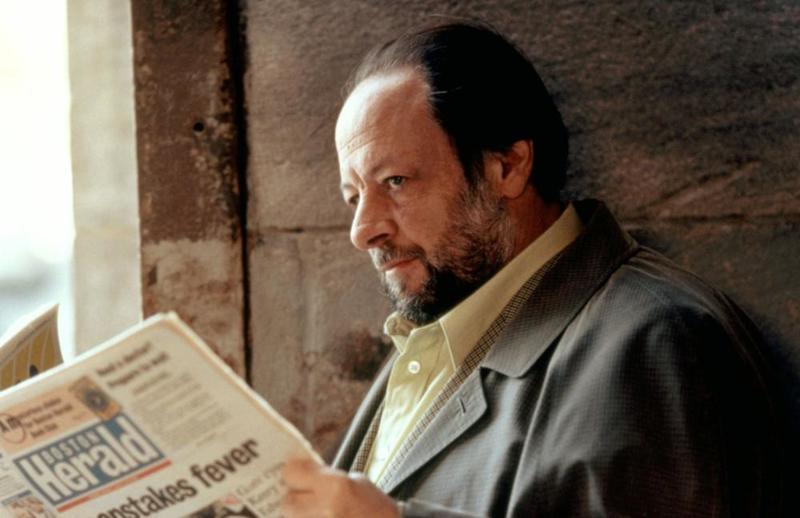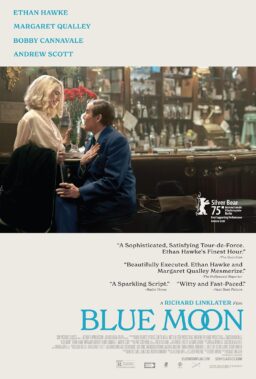The problem with writing an obituary about Ricky Jay, who passed away yesterday at the age of 72, is that he’s perhaps the only person truly qualified to sum up his life. Even someone trying to make up the wildest and most improbable resume imaginable would be hard-pressed to top Jay’s achievements: He was a sleight-of-hand magician whose illusions startled and amazed audiences throughout the world; a student of the history of magic who used his extensive knowledge to pen several books, and put together a number of museum exhibitions and lectured extensively on the subject; an actor whose cagey screen presence made him a favorite with such filmmakers as David Mamet and Paul Thomas Anderson; a crucial man behind the scenes who helped create a number of the screen’s most celebrated illusions. Jay was a raconteur of the highest order, and a perennial talk show favorite. Oh yeah, he was so deft in his handling of an ordinary deck of cards that he could take one, fling it through the air and sink it into the rind of a watermelon at a distance of ten paces.
He was born Richard Jay Potash on June 26, 1946 and grew up in Elizabeth, New Jersey. As Jay was as tight-lipped about his early years as he was the magic tricks he become famous for, little is known about that period in his life. He clearly demonstrated a flair for magic tricks at an early age as he performed a full magic act on the television show “Time For Pets” in 1953 at the age of four. He eventually began doing it professionally and achieved a number of accomplishments in the field—he is said to have been the first magician to play comedy clubs and was also to first to open a rock concert when he appeared on a bill with Ike & Tina Turner and Timothy Leary. At a time when more flamboyant performers like Doug Henning and David Copperfield were attracting big audiences, Jay’s act, in which he pulled off any number of seemingly impossible illusions while offering up banter as entertaining as the tricks themselves, soon developed a cult following. Jay even developed a trio of one-man shows, “Ricky Jay and His 52 Assistants,” “Ricky Jay: On the Stern,” and “Ricky Jay: A Rogue’s Gallery,” which were directed by none other than David Mamet.

Mamet would also be the catalyst for Jay’s move to the big screen, though not as an illusionist. Magic tricks of the sort performed by Jay do not translate very well to film because even if they are done before the camera in a single take with no cutaways or edits to speak of, most viewers just assume that there is still some kind of fakery going on behind the scenes. However, Mamet recognized that Jay’s gregarious personality and the sly manner in which he delivered the stories his tricks were based on could be deployed successfully in a non-magical context, and began casting him in a number of his movies, including “House of Games” (1987), “Things Change” (1988), “Homicide” (1991), “The Spanish Prisoner” (1997), “State and Maine” (2000), “Heist” (2001, pictured above) and “Redbelt” (2008). Jay never had a leading role in any of these films but when he did come on the screen, he would almost always command attention, sometimes stealing the scene right from under the noses of his costars with the same kind of ease of his illusions. He soon found himself popping up in other films such as the James Bond epic “Tomorrow Never Dies” (1997), the con woman comedy “Heartbreakers” (2001) and the magic-related productions “The Prestige” (2006) and “The Great Buck Howard” (2008). Other than Mamet, Jay’s most fruitful screen collaborations were with filmmaker Paul Thomas Anderson, who cast him as one of the loyal members of Burt Reynolds’ pornographic filmmaking family in “Boogie Nights” (1997) and had him serve as the narrator for his epic “Magnolia” (1999), where his opening monologue about chance and coincidence proved to be the first of that film’s countless pleasures. On television, besides his numerous talk show appearances, he also turned up as card player Eddie Sawyer during the first season of the acclaimed Western series “Deadwood.”
With his incredible skill set, Jay carved out a second Hollywood career working behind the scenes as a consultant, devising some of the magic tricks on display in “The Escape Artist” (1982) and teaching Robert Redford how to perform a coin trick for “The Natural” (1984). In the 1990s, he and partner Michael Weber created Deceptive Practices, a company dedicated to helping create workable solutions to seemingly impossible visual tricks for the stage and the screen. One of his best-knows illusions was found in “Forest Gump,” where he helped create the specially designed wheelchair employed to hide Gary Sinise’s legs from view. Other projects that he worked on in this capacity included “Sneakers,” “Wolf,” “The Illusionist,” “The Prestige,” “Ocean’s Thirteen” and the Broadway production of “Angels in America.”

Jay orchestrated any number of spectacular illusions but, unlike a number of current magicians, he never succumbed to the urge to show audiences how he pulled them off. However, as a student of the history of magic, con games, gambling and frauds of all sizes, he would prove to be both a collector and historian of this particular area of study and conveyed that knowledge into a series of books that took care to protect the secrets of how they did it but offered up such a wealth of information that one didn’t mind. His 1986 book on oddball entertainments, Learned Pigs & Fireproof Women, is such a delightful read that even those without any working interest in the subject will find it fascinating. In 2012, he lifted the curtain on himself slightly by serving as the subject of the compelling documentary “Deceptive Practice: The Mysteries and Mentors of Ricky Jay,” in which he talks at length about his mentors in the field and how they would help shape his own efforts.
<span class="s1" <the="" best="" way="" to="" commemorate="" jay’s="" life="" and="" mark="" his="" passing,="" of="" course,="" is="" revisit="" work="" observe="" singular="" genius="" in="" action.="" the="" aforementioned="" The best way to commemorate Jay’s life and mark his passing, of course, is to revisit his work and observe his singular genius in action. The aforementioned Learned Pigs & Fireproof Women deserves a place of prominence on the bookshelf of every home. On the big screen, the choice films include “House of Games,” “The Spanish Prisoner” (still my favorite Mamet film), “Magnolia” and the “Deceptive Practice” documentary. Of course, YouTube is chock full of his numerous television appearances over the years that allow you to watch him do everything from impossible-looking feats of prestidigitation to slicing pencils in half with a thrown playing card. To say that there will never be another performer like him is a massive understatement—the fact that someone like him existed in our timeline in the first place is a bit of magic to rival any of his own tricks.












